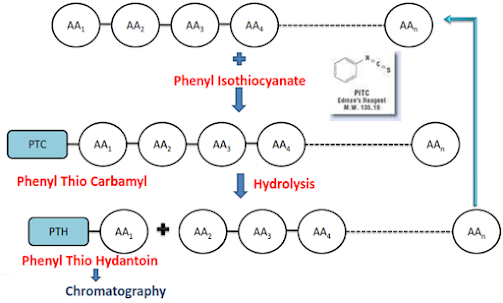Chemotaxonomy
Contents
Classification of drugs (Chemotaxonomy)
• Definition and goals of chemotaxonomy
• Factors involved in chemotaxonomy
• Applications of chemotaxonomy
• Methods in chemotaxonomy
Objectives
At the end of this tutorial, student will be able to
• Define chemotaxonomy
• Discuss the factors involved in chemotaxonomy
• Discuss the applications of chemotaxonomy
• Explain and discuss the various methods in chemotaxonomy
Chemotaxonomy
Chemical Plant
Taxonomy / Chemosystematics
• Approach of taxonomy in which the chemical features of
plants are used in developing classification or in solving the taxonomical problems
is called chemotaxonomy
• Attempt to classify and identify organisms (originally
plants), according to demonstrable differences and similarities in their
biochemical compositions
• Establishes a relationship between position of plant
(taxonomy) and attempts to utilize the chemical facts for more exact
understanding of the biological evolution and relationship
Reason for rapid
growth and purpose of Chemotaxonomy
• Chemical characters + traditional taxonomical system of
classification
• Evidence from as many source as possible should be used
• Development of many new technologies
• Isolation and characterization of new compounds
• Biosynthetic pathways
Goal in Chemotaxonomy
• Chemical structures of the genes themselves
• Techniques – DNA hybridization, Serotaxonomy, Amino acid
sequencing etc
Factors to be
considered
• Parallelism
• Diversification
• Homology
• Parts of the plants
• Chemical characters
Parallelism
• Different groups of plants undergone a similar type of
change
Diversification
• Groups of related plants may have developed different
characters
• Applicable to both chemical & morphological characters
Example:
• Benzoic acid in related plants
• Alkaloid sparteine in unrelated plants, Cytisus scoparius (Leguminosae)
and Chelidonium majus (Papaveraceae)
Homology
• Related plants produce chemically Unrelated compounds with
the Same biogenetic origin
Example: Alkaloid like substance Bakankosine of Strychnous
vacacuo (Loganiaceae) homologus with nitrogen free iridoid like Swertiamarin
(Loganiaceae) and Gentiopicrin (Gentianaceae)
Parts of the plants
• Not only age and degree of development, also the part of
the plant used for analysis
Example:
• Composition of clove oil from flower bud differs from that
of oil from blown clove
• Composition of cinnamon leaf oil differs from the oil
obtained from cinnamon root or bark
Chemical Characters
• Universal occurrence – carbohydrates, amino acid – less
considered
• Compounds known to occur in one species only are less
considered Example: Coniine from Conium maculatum, is not found in any other
plants, hence less considered
• Intermediate distribution – secondary modifications and rearrangement
Applications
• Primary metabolites
(widely distributed)
– Accumulation and form of accumulation
Example: Sucrose in Beta vulgaris, Sachharum officinalis
• Secondary metabolites
(limited distribution)
• Macromolecules
(proteins, enzymes)
• Secondary
metabolites
Alkanes: Pristane
Phytol
Fatty acids: Palm
oil from the fruit wall has more of palmitic, oleic, linoleic esters whereas
the seed oil has more of lauric and myristic acid
Alkaloids
Glycosides:
Commonest glycosides (O-glycosides) – C-glycosides
Phenolic compounds:
Trihydroxy derivative of benzoic and cinnamic acid
Carotenoids
Rhodoxanthin in yew berries
Capsanthin in capsicum
Nucleic acids
DNA of wheat, barley, rye when compared with that of the DNA
of oat showed marked difference
Methods in
Chemotaxonomy
• Serotaxonomy
• DNA hybridization
• Amino acid sequencing
Serotaxonomy
• Approach or utility of serology
• Serology:
antigen and antibody reaction
Antigen:
Substance when introduced into the body stimulates the production of an
antibody
Antibody: Protein
found principally in blood serum and characterized by a specific reactivity
with the corresponding antigen
Principle
• Preparation of antigen
• Production of antibody
• Extraction of antisera
• When the specific antisera and antigen are reacted,
precipitation reaction occurs. The degree of precipitation relates to protein
homology
Gel
Diffusion Method
Plant A: Antigen – X
Y
Antisera – X1 Y1
Plant B: Antigen – Y Z
Antisera – Y1 Z1
DNA
Hybridization
Amino acid
Sequencing – Sangers Method
Amino acid
Sequencing – Edmans Method
Other methods used
are
• Restriction
Fragment Length Polymorphism (RFLP) – to distinguish between species and
hybrid of species.
Example: Duboisia sps, Panax sps
• Random Amplified
Polymorphic DNA Analysis – to distinguish between various sub species
Example: Melissa officinalis
Summary
• The factors to be considered in chemotaxonomy includes
parallelism, diversification, homology, chemical characters and age of the
plant
• The chemical characters should not be of universal
occurrence, should not be in only one plant and should be of intermediate
distribution
• The methods used in chemotaxonomy includes Serotaxonomy,
DNA hybridization, Amino acid sequencing, Restriction Fragment Length
Polymorphism, Random Amplified Polymorphic DNA Analysis etc




